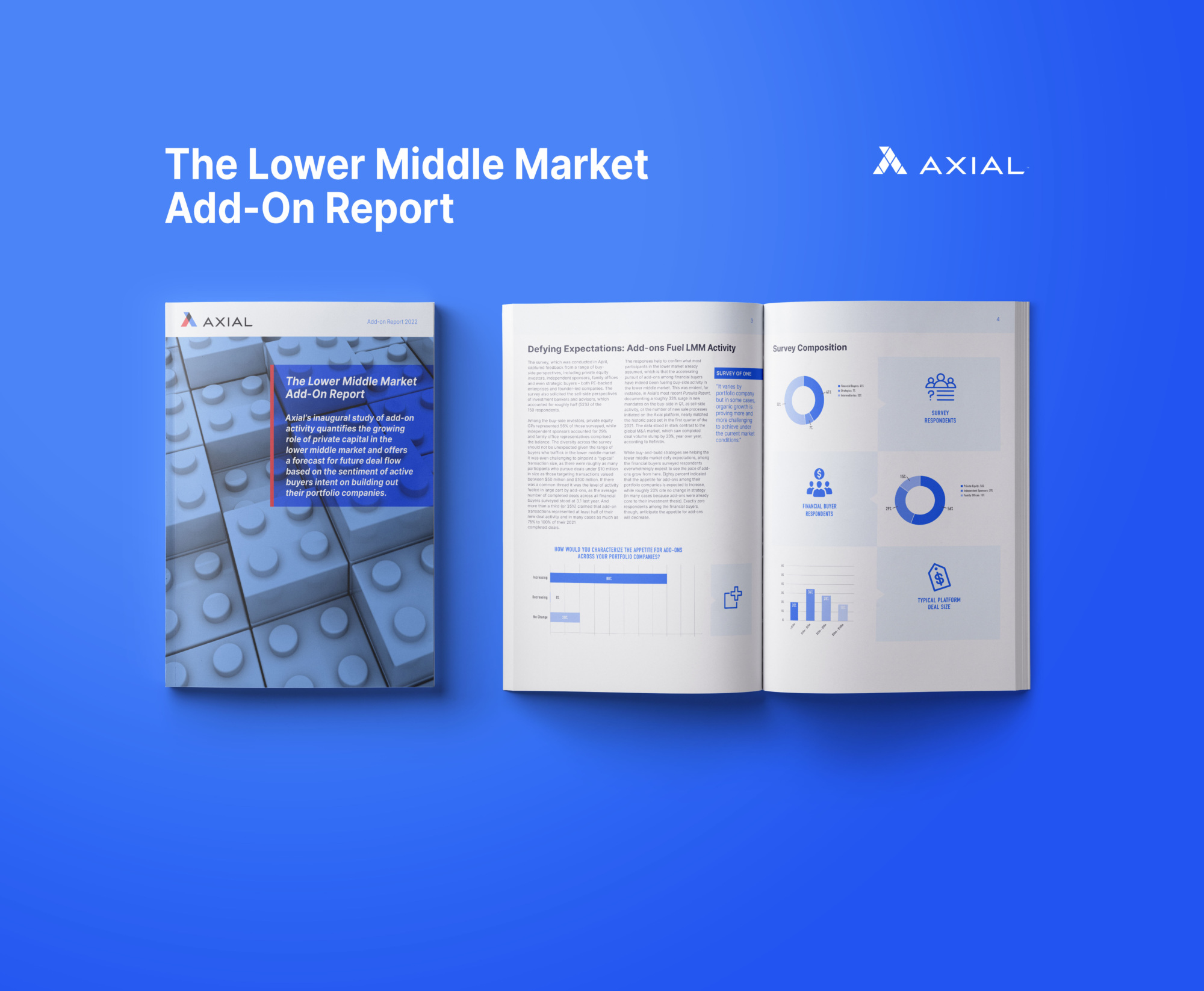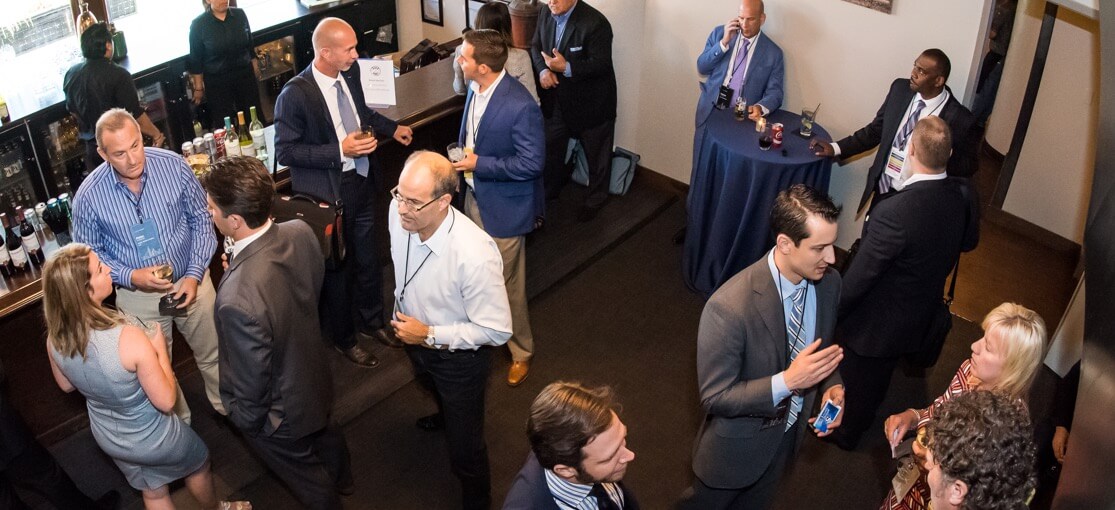
Introducing The Lower Middle Market Add-On Report
A survey of 150 deal professionals across the Axial network documents the extent to which financial sponsors have descended upon…
It’s no secret that 2017 was a strong year for private equity. The industry saw growth with global buyout value growing 19 percent to $440 billion, according to Bain & Co.’s 2018 Global Private Equity Report. In North America, deal value, including add-on acquisitions, rose to $196 billion. And the strong debt market helped fuel the buying frenzy. The average debt multiple stretched toward six times EBITDA, according to the report.
In addition to strong deal making, the fundraising environment showed no sign of weakness. Private equity firms raised $701 billion globally over the course of 2017. Overall, more than two-thirds of funds that closed in 2017 met or exceeded their target amounts, and 39 percent took less than a year to close. More of the same is expected in 2018 despite the fact that dry powder in the industry has been on the rise since 2012 and hit a record high of $1.7 trillion by the end of 2017.
Limited partners are still clamoring to invest in the space. According to the report, 95 percent LPs say returns from private equity investments have met or exceeded their expectations. According to a recent survey by Preqin, which provides data on alternative assets, 92 percent of LPs plan to devote the same amount of capital or more to private equity in the coming 12 months, and 96 percent say they plan to maintain or increase their PE allocations over the longer-term.
As of midyear 2017, the median net return of PE holdings in the portfolios of public pension funds over a 10-year time horizon was 8.5 percent, compared with 4.2 percent for public equities, 4.5 percent for real estate investments, and 5.2 percent for fixed income. That kind of outperformance is irresistible in a period marked by persistently low yields on most other investment options.
As a result of LPs’ strong appetite there continues to be an influx of new private equity firms entering the space. According to Bain’s research, there are a total of 7,775 private equity firms seeking deals, an number that is continuing to increase. Add that to the aggressive number of corporate buyers and competition for deal flow is stiff.
2018 looks to remain a seller’s market. With tax cuts as a tailwind, corporate buyers will look for growth through acquisitions while private equity firms look to put record amounts of dry powder to work. Last year’s 1,063 exits, valued at $366 billion, surpassed 2016’s totals of 1,032 and $337 billion, respectively. The year produced a number of standout deals, including The Carlyle Group’s $3 billion sale of Nature’s Bounty to KKR, and the $2 billion sale of Ascend Learning by Providence Equity Partners and the Ontario Teachers’ Pension Plan to Blackstone and the Canada Pension Plan Investment Board.
As a result of the seller’s market, companies are being sold faster and private equity firms will have to work faster to create value. In an effort to ensure that they are exiting companies at the optimal time and generating the best return, a growing number of private equity firms are taking the exit decision out of the hands of the managing directors who found and nurtured the deals. Instead, they are forming exit committees to bring a more objective and disciplined approach to exit strategies and timing. For example, HgCapital, which formed what it calls a realization committee, is giving the group just as much influence over exit decisions as the firm’s investment committee has over investments.
All told, 2018 is expected to be another solid year for the industry. In addition to all the tailwinds the industry is experiencing, macroeconomic conditions are expected to remain strong. Still, with high valuations, a record flood of new capital, and unprecedented levels of competition, one has to wonder how long the bull market can last.
In Search of More Capital
It’s been established that there’s an abundance of capital available to private equity firms. Look no further than the record fund closes in 2017. The $24.7 billion Apollo Investment Fund IX was the largest single buyout fund raised in history. The $18 billion (€16 billion) CVC Capital Partners Fund VII was the largest euro-denominated fund ever raised. KKR’s $9.3 billion Asian Fund III was the largest-ever Asia-focused buyout fund.
Yet, the mega firms are cultivating new sources of capital, according to the report. Even amid the flood of capital from traditional sources—public and private pension funds, endowments, sovereign wealth funds, and insurance companies—private equity firms are actively seeking new sources of capital. Blackstone, Carlyle, and Apollo Global Management, for instance, are developing ways to court more ultra-high-net-worth individuals, with plans to work their way down the line to high-net-worth individuals, accredited investors and, ultimately, the mass retail market through 401(k) accounts, according to Bain. Regulation and other hurdles await, but executives at these firms have made it clear that they see individuals and retail investors as the industry’s next engine of growth. Blackstone took a step in that direction in 2017 when it announced an aggressive push into products targeting individuals with $1 million to $5 million available to invest. The Wall Street Journal laid out the logic: There were seven-and-a-half times more investors with $1 million to $5 million at the end of 2016 than there were investors with $5 million to $25 million. It will be interesting to see how this trend plays out.
